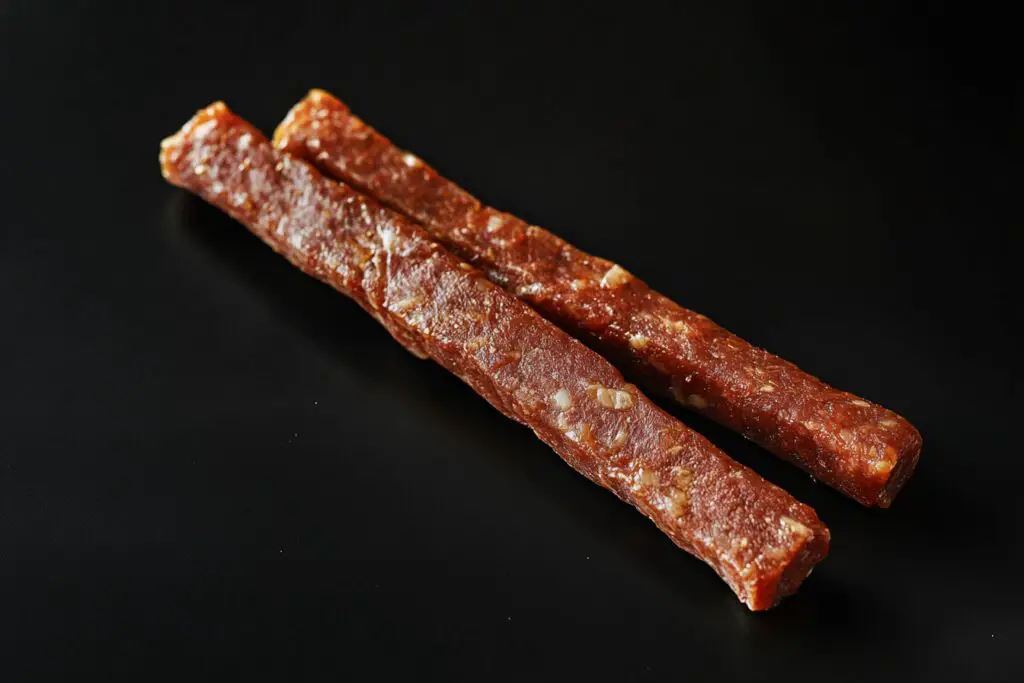Since 1929, Slim Jims have been a staple of American snacking, but what exactly goes into these mysterious meat sticks? The reality behind their ingredient list might raise some eyebrows. While millions reach for these convenient snacks daily, few understand the complex mixture of ingredients that create their signature snap and flavor.
The mystery of mechanically separated chicken

One of the most intriguing ingredients in a Slim Jim is mechanically separated chicken. This process involves forcing chicken carcasses through a sieve under high pressure, removing every bit of meat from the bone. The resulting paste becomes a key component in the Slim Jim recipe, developed by Lon Adams in the 1990s.
Combined with beef and pork, this chicken mixture forms the protein base of every Slim Jim. But it’s the next set of ingredients that truly transforms this meat blend into the distinctive snack we know today.
Sugar sources multiply in unexpected ways
Most consumers might be surprised to learn that multiple forms of sugar appear in each Slim Jim. Corn syrup, dextrose, and maltodextrin all make an appearance. These varying sugar types serve different purposes beyond sweetness – they help create the signature texture and aid in the fermentation process.
What if these sugar sources were eliminated? The snack would lose its characteristic firmness and shelf stability. The fermentation process, which gives Slim Jims their tangy flavor, relies heavily on these sugar varieties to feed the lactic acid starter culture.
Soy appears in three different forms

Within a single Slim Jim, soy manifests in three distinct forms: textured soy flour, hydrolyzed soy protein, and soy lecithin. Each version serves a specific purpose. The textured flour provides structure, while hydrolyzed protein enhances flavor. Soy lecithin acts as an emulsifier, binding ingredients together.
This trio of soy derivatives works in concert to create the unique texture and flavor profile that makes a Slim Jim immediately recognizable. Without these components, the snack would lack its characteristic bite and might separate over time.
The crucial role of sodium nitrite
Among the most important yet least understood ingredients is sodium nitrite. This preservative does more than extend shelf life – it’s responsible for the characteristic color and plays a crucial role in flavor development. The amount used is carefully controlled, appearing last on the ingredient list at less than 2% of the total composition.
Beyond preservation, sodium nitrite contributes to the complex chemical reactions that occur during the manufacturing process. These reactions help create the distinctive aroma and taste that consumers associate with Slim Jims.
The fermentation process changes everything

Perhaps the most fascinating aspect of Slim Jim production is the fermentation process. Similar to salami or pepperoni, these snacks rely on bacterial cultures to develop their unique properties. The lactic acid starter culture transforms the raw ingredients, lowering the pH to around 5.0 and creating that characteristic tangy flavor.
This fermentation step sets Slim Jims apart from simple dried meat products. The process requires precise control of temperature and humidity, allowing the bacterial culture to work its magic on the carefully balanced mixture of ingredients.
Understanding these hidden ingredients reveals the complex science behind this seemingly simple snack. From mechanically separated meats to carefully cultivated bacterial cultures, each component plays a vital role in creating the distinctive characteristics that have made Slim Jims an enduring part of American snack culture for nearly a century.

